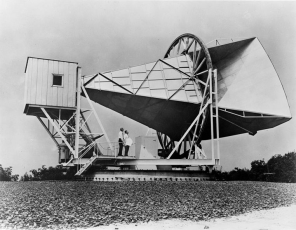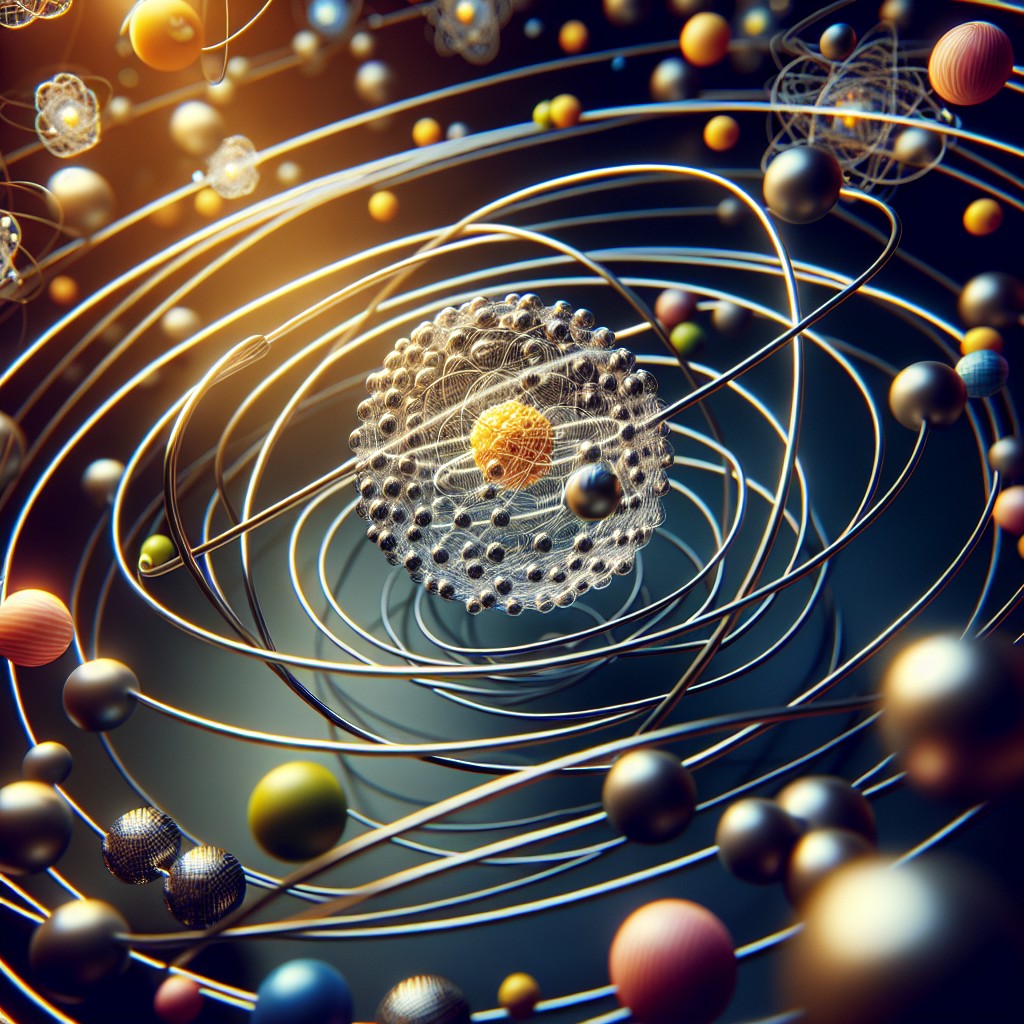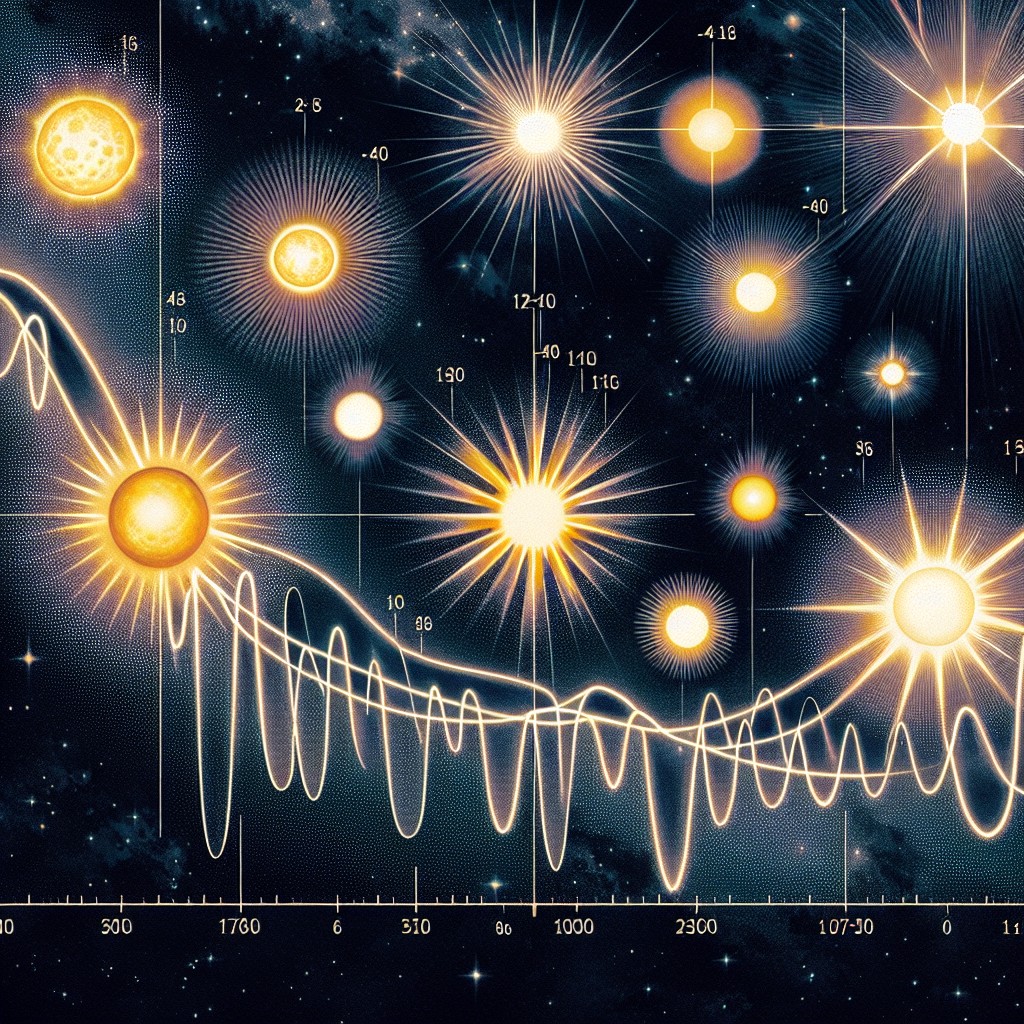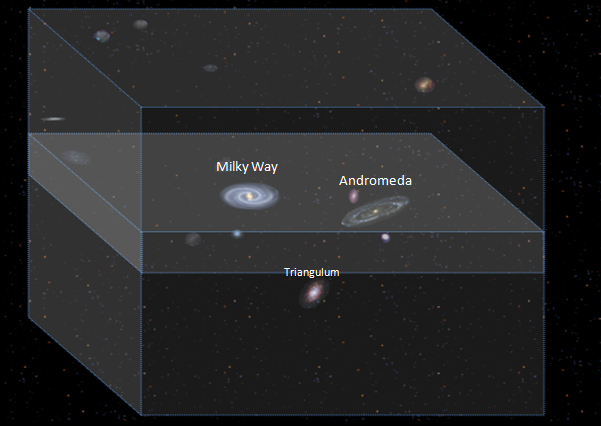Steady State Theory was a model to explain the observation of the expanding universe before the Big Bang Theory became a viable theory.
Rise of the Steady State Theorists
Problems with Steady State Theory
Rise of the Big Bang Theorists
Evidence of the Big Bang Theory
The Problem
It had been known since Edwin Hubble’s observations in the 1920’s that the universe was expanding. But while some suggested that if the universe was expanding then it may have been created at some moment in time there seemed to be a major flaw in their logic. The major problem with this idea was that, based on the most accurate data at the time, the rate of expansion would mean that the Universe was only a few billion years old and this was less than the age of many stars. Additionally if the universe has always been expanding, which was implied by Hubble’s observations, but had no beginning then galaxies and stars would be too distant to see.
The Answer
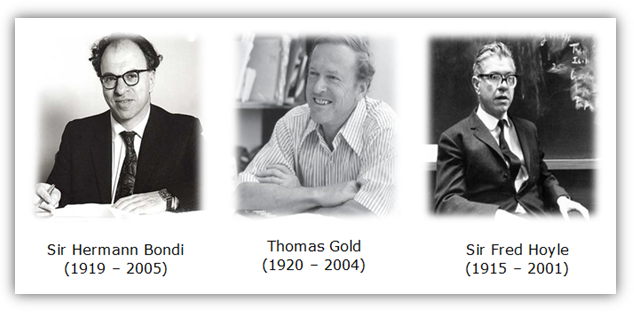
In the 1940’s three astronomer-mathematicians at the University of Cambridge – Hermann Bondi, Thomas Gold and Fred Hoyle created a theory that would account for an eternal universe that although was expanding allowed for the density of matter to remain the same. This theory was the Steady State Theory.
What is Steady State Theory?
Their theory was known as the ‘Steady State Theory’ and was proposed which basically suggested this. The same mechanism that made the galaxies move apart and the universe expand also created hydrogen molecules in the space where those galaxies once were. Over billions of years this would cause new galaxies to form and the overall density of matter in the universe would remain in a steady state. This theory only required one hydrogen molecule to be created in every 10 billion cubic meters of space every year.
Rise of the Steady State Theorists
This theory was widely accepted among the scientific community. The idea of the universe being created in this slow steady rate seemed to be preferable to the notion that the entire matter of the universe came into being at any one instant. Additionally many scientists had philosophical problems with the idea of the universe being created at any one point as this would aid the notion of a deity.
The Steady State Theory remained very popular for several decades and many scientists thought the notion of a universe with a beginning was a joke. In fact the term ‘big bang’ was coined by Fred Hoyle to conjure the image of a cartoon bomb and the name stuck.
Problems with Steady State Theory
Cracks began to form in the steady state theory. Observations of distant space (which due to the finite speed of light means that we are effectively looking back in time) shows distant galaxies that are younger and more bunched up than galaxies nearer to our own milky way. If the steady state theory was correct then we would observe the opposite.
Rise of the Big Bang Theorists
While the evidence of problems with the Steady State Theory began to pile up evidence for a ‘big bang’ event mounted. If the universe had no beginning but was expanding then galaxies would be too distant to see. As the steady state theory had been proven wrong by observations of distant younger galaxies then the belief in the universe having a beginning grew.
Evidence of the Big Bang Theory
Improved measurements of the rate of expansion allowed new calculations to be made of the age of the universe. The more precise age of the universe based on these calculations suggests that it is about 13.7 billion years old, which is more than enough for the oldest galaxies to have formed.
Additionally in the mid-1960s, Arno Penzias and Robert Wilson were working on a radio receiver to pick up and boost radio signals for bell industries. This giant horn shaped receiver had a constant hiss which was originally attributed to the city nearby. They turned the horn towards space in order to illuminate the problem but it remained. They even put the possibility down to pigeons nesting in the receiver and had them all shot. After trying the receiver at different positions in the sky and still receiving this hiss they realised what this was. The hiss was caused by microwave radiation; the background radiation left over from the Big Bang in the form of microwave energy. The universe was/is still at 3 degrees Kelvin even after 13,700 million years. This was the required proof of the big bang event which also earned Penzias and Wilson the noble prize.
Above is the Holmdel Horn Antenna used by Penzias and Wilson to discover the background microwave radiation. It is made of Aluminium and steel and is 50ft long with a 15 meter receiver. Situated at Bell Telephone Laboratories in Holmdel, New Jersey it is a US National Historical Landmark.
Subsequently (on the 18th of November 1989) NASA sent up a Satellite called COBE (the Cosmic Background Explorer) in order to map the infrared and microwave radiation left over from our early universe.
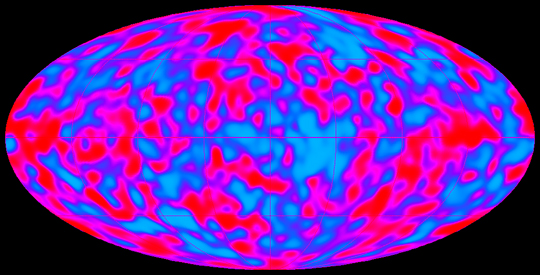
The image above shows the map the data produced by COBE, the slight variations in heat are represented in the colour (red being the warmest regions) .The variations are caused by clumps of matter which had developed in the early universe. These clumps of matter have become the galaxies, stars and planets formed today.
